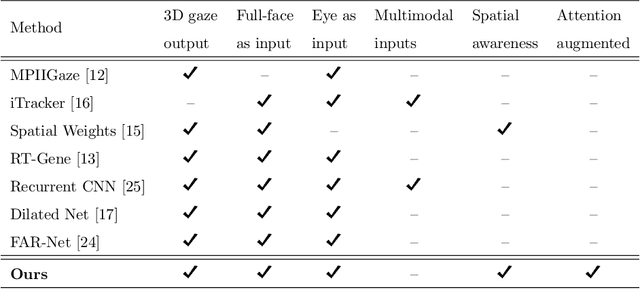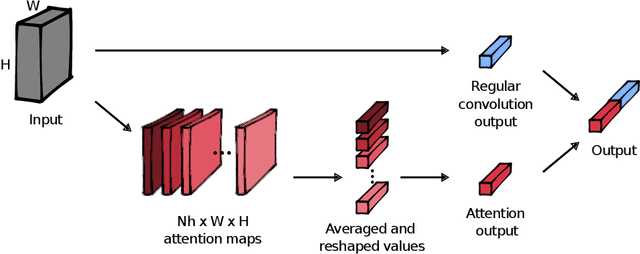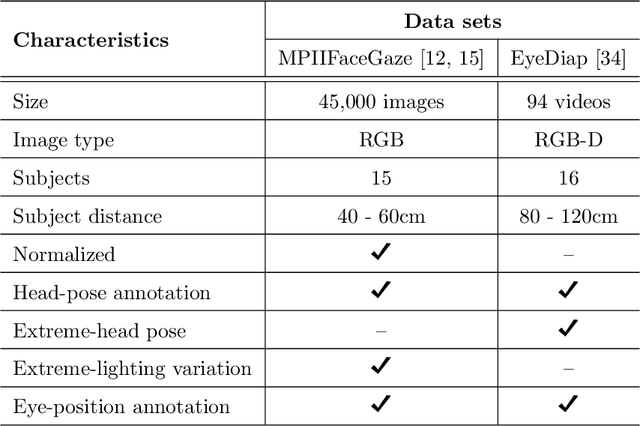On estimating gaze by self-attention augmented convolutions
Paper and Code
Aug 25, 2020



Estimation of 3D gaze is highly relevant to multiple fields, including but not limited to interactive systems, specialized human-computer interfaces, and behavioral research. Although recently deep learning methods have boosted the accuracy of appearance-based gaze estimation, there is still room for improvement in the network architectures for this particular task. Therefore we propose here a novel network architecture grounded on self-attention augmented convolutions to improve the quality of the learned features during the training of a shallower residual network. The rationale is that self-attention mechanism can help outperform deeper architectures by learning dependencies between distant regions in full-face images. This mechanism can also create better and more spatially-aware feature representations derived from the face and eye images before gaze regression. We dubbed our framework ARes-gaze, which explores our Attention-augmented ResNet (ARes-14) as twin convolutional backbones. In our experiments, results showed a decrease of the average angular error by 2.38% when compared to state-of-the-art methods on the MPIIFaceGaze data set, and a second-place on the EyeDiap data set. It is noteworthy that our proposed framework was the only one to reach high accuracy simultaneously on both data sets.
 Add to Chrome
Add to Chrome Add to Firefox
Add to Firefox Add to Edge
Add to Edge